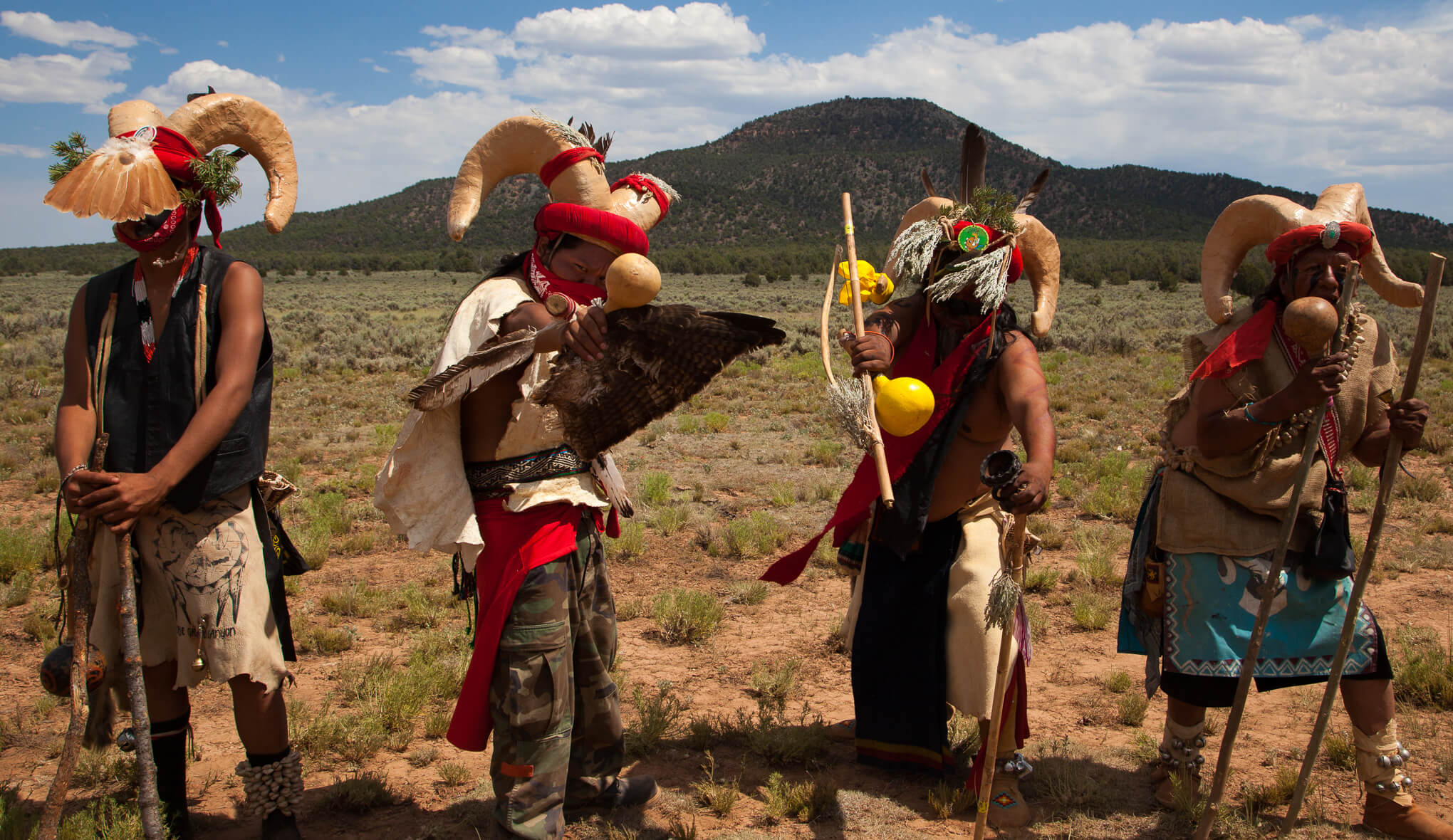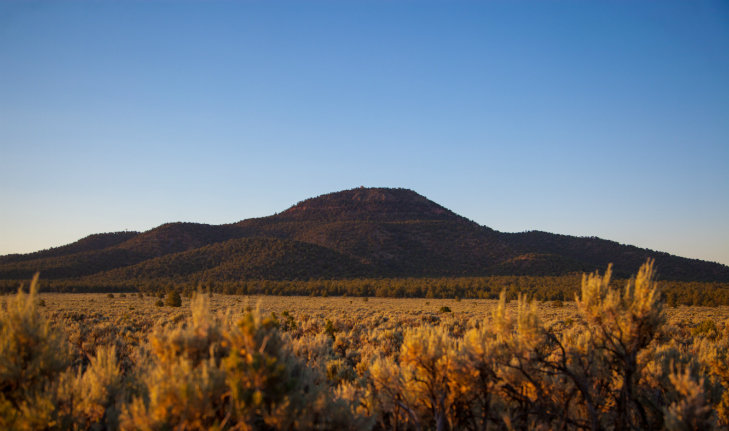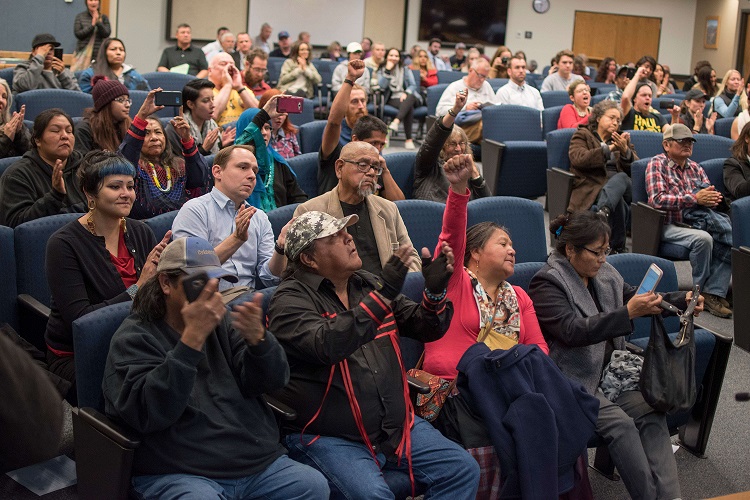
Energy Fuel Resources Tries to Downplay Grand Canyon Cancer Concerns
FLAGSTAFF CITY COUNCIL APPROVES RESOLUTION OPPOSING URANIUM MINING, DESPITE COMPANY CLAIMS
Featured image: Members of the Havasupai Tribe overjoyed to see the success of their resistance when the Flagstaff City Council announced their uranium hauling ban. Photo: Dustin Wero
by
As the Canyon Mine’s operations to extract uranium ore adjacent to Red Butte edged closer to reality last November, Flagstaff’s City Council made the significant decision to oppose federal laws that would allow the transport of uranium ore through the Arizona city and the Navajo Nation’s territory. In Resolution No. 2017-38, the City Council went so far as to declare that it opposes uranium mining, while reaffirming its status as a Nuclear Free Zone and resolving “to actively work to advance social and environmental justice for the Indigenous Community.” This City Council’s bold move arrived at a crucial moment in the ongoing uranium mining debate, and it was most assuredly a win for everyone resisting the operations of Energy Fuels Resources.
More than 100 people were in attendance at the resolution vote. Many voiced their concerns about the proposal to transport large amounts of radioactive ore through communities like Flagstaff and across the Navajo Nation on its path to refinement. Members of the Havasupai, Navajo, Hopi, Apache, and Pueblo nations attended the meeting to express solidarity with the proposed motions.
Councilmember Eva Putzova issued a statement later on, saying, “With this resolution, the Council is rallying behind the Native American communities in their fight for social and environmental justice. I’m looking forward to working with our congressional representative and state representatives on legislation that bans uranium mining and the transport of uranium ore for good,” according to Haul No!, an activist and educational organization that’s fighting the uranium haul route.
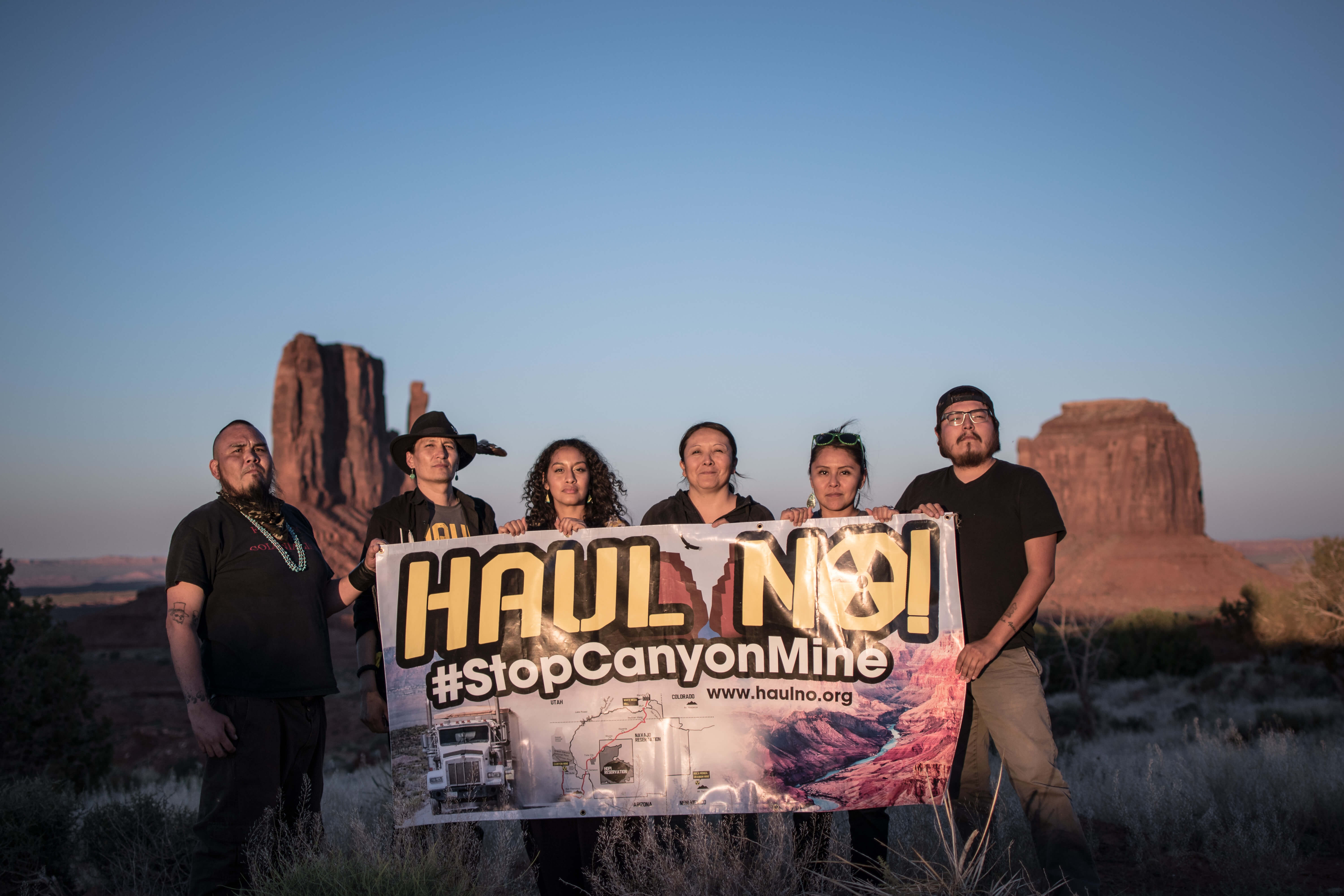
Representatives of Haul No! in front of Monument Valley on the Navajo Nation. Photo: Dustin Wero.
But while Flagstaff moved one step closer to impeding the uranium mining industry, the nation as a whole opened up even more protected lands to the resource extraction industry. During the fall season, Trump talked about letting more uranium mining around the Grand Canyon region. Then, in December 2017, he reduced Bears Ears and the Grand Staircase-Escalante national monuments, setting off what The New York Times predicted would be “a legal battle that could alter the course of American land conversation.” The decision opened millions of preserved public acres to oil and gas extraction, mining, and logging. One month later, he opened up land in Bears Ears National Monument for further resource drilling.
The nation recently learned about Energy Fuels Resources when documents obtained by The Washington Post showed that the company “launched a concerted lobbying campaign to scale back Bears Ears National Monument, saying such action would give it easier access to the area’s uranium deposits and help it operate a nearby processing mill.” Energy Fuels officials had pushed the White House to reduce Bears Ears as much as possible to minimally protect the “key objects and areas, such as archeological sites, to make it easier to access the radioactive ore.” The Canadian company has been designing similar plans that would result in the desecration of sacred spaces and practices—earning the attention of local conservation organizations focused on the Grand Canyon Region as covered throughout our series.
Indigenous communities know the history and the effects of nuclear colonialism. “My great-grandfather was a soldier who fought in Normandy, lived, and returned home to provide for his family,” said Sarana Riggs, a member of the Navajo Nation and the Native American Coordinator for the Grand Canyon Trust. Her great-grandfather worked at the Rare Metals Uranium Mill on the Navajo Reservation while facing the unknown dangers of radioactivity throughout his life. Riggs said the problem surfaced at its peak 10 years ago when he was suffering from pains that no one realized were due to stomach cancer.
Riggs great-grandfather soon passed away from the disease. The Rare Metals Mill has since been shut down, and houses around the mill were subsequently demolished due to documented health and environmental effects on nearby families and homes.
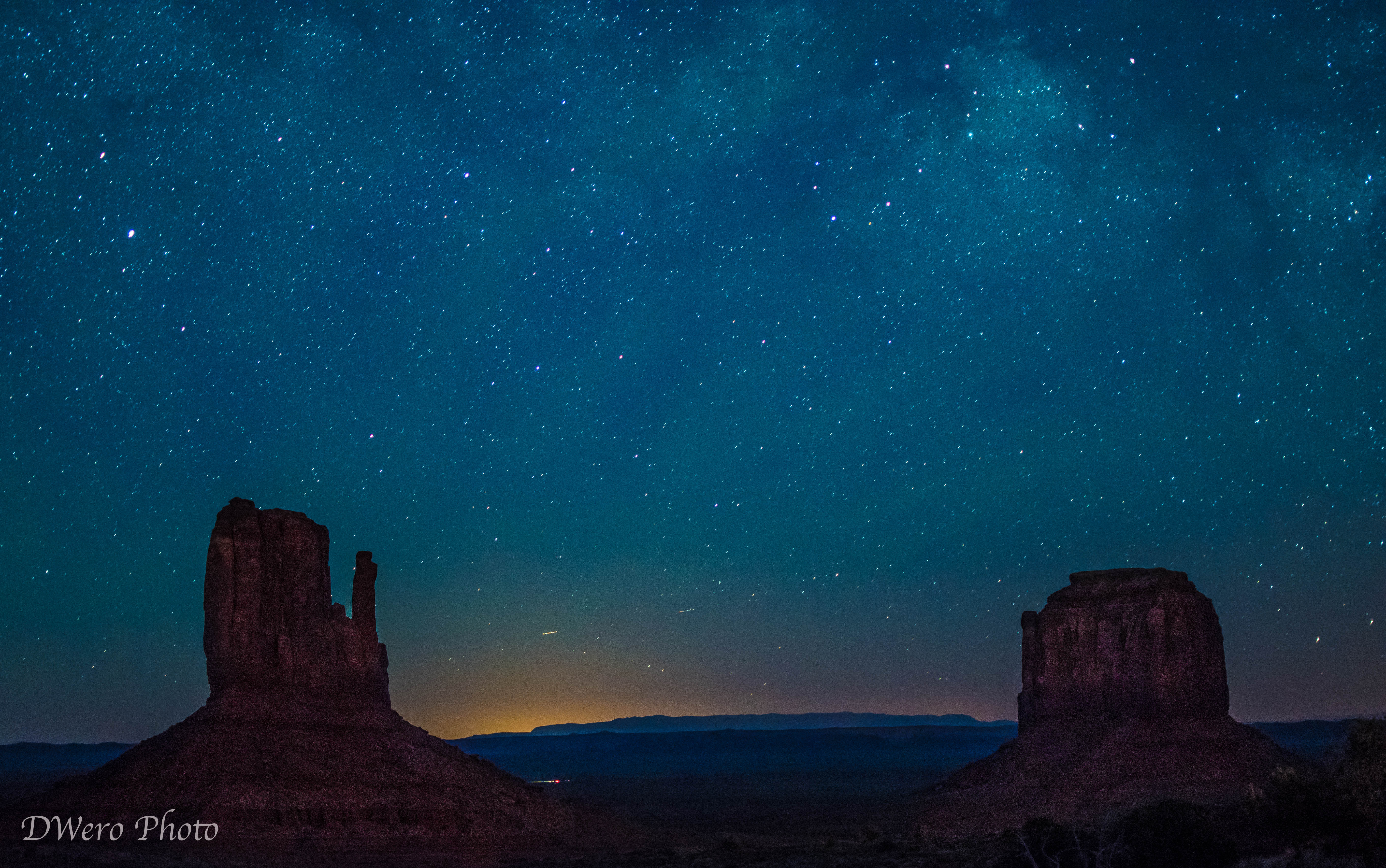
The Mitten in Monument Valley on the Navajo Nation. Areas like this are where the planned haul route will pass through. Photo: Dustin Wero.
Members of the Navajo Nation also struggle with the health repercussions due to the 523 abandoned uranium mines and 22 wells closed by the EPA due to high levels of radioactive pollution. According to the EPA, “Approximately 30 percent of the Navajo population does not have access to a public drinking water system and may be using unregulated water sources with uranium contamination.” A disproportionate number of the 54,000 Navajo living on the reservation now suffer from organ failure, kidney disease, loss of lung function, and cancer.
The Canyon Mine could have a similar impact on the Havasupai Nation and millions of Americans who depend on water from the Colorado River.
Riggs and others present during the Flagstaff City Council’s resolution meeting were relieved to see Flagstaff recognizing that members of the Navajo Nation and surrounding indigenous nations also make up the Flagstaff community. “Many travel over 80 miles to Flagstaff each day for work, school, or medical needs,” Riggs explained. “Flagstaff recognized the Navajo Nation, dealing with over 500 abandoned uranium mines, doesn’t need uranium hauling on top of that.”
The resolution was symbolic because the federal government, not the town of Flagstaff controls those roads. According to a press release by Haul No!, during the resolution meeting, Councilmember Celia Barotz reminded those in attendance that, “‘this is just the beginning, and we’re going to need all of you to help us through the various processes at the state and federal level if we’re going to make meaningful changes over the next several years.’” Borotz implored the community to remain engaged in the ensuing debate.
“With a unified voice of Flagstaff, Havasupai, Navajo, and Hopi communities, I hope representatives will address this,” said Riggs. “This isn’t U.S. land. They might have laws controlling Navajo highways, but ancestrally these are our lands. We’re upholding our rights. I’m looking at the Navajo Nation now to stand up, fight, and hold our leaders accountable because this is a threat to our health.”
Prior to the resolution, the Indigenous Environmental Network gave the city council a report detailing education, economic development, and social justice regarding Indigenous Peoples throughout Flagstaff, Riggs said.“The city hasn’t been so friendly to us native people. We’re more likely to get arrested or harassed by police and not always given the same treatment in businesses.” Following the report, the city council committed to addressing some of these problems. “The uranium transport resolution is one of the first steps,” said Riggs. “I hope the decision sets a precedent recognizing we have equal rights to everyone in Flagstaff.”
The final decision by the Flagstaff City Council was not without significant debate from both sides through months of town hall meetings. At one meeting this past July, the President and COO of Energy Fuels, Mark Chalmers, was in attendance to declare support for the mining operation. In defense of the project, Chalmers told the council that the uranium transported by Energy fuels is coming out of the ground in a natural state. “If you look at the Grand Canyon, and you looked at the Canyon Mine and the other uranium mines on the north side of the Grand Canyon, hundreds of these things have eroded naturally by the Colorado River over millions of years, hundreds of natural uranium deposit formations because the Grand Canyon cut through a zone of natural radioactive activity,” Chalmers said.
However, in a survey of 474 abandoned uranium mines on the Navajo Nation by the EPA, researchers have shown that 85 percent of those mines produced gamma radiation levels clocking in at twice the background level for the area. Furthermore, nearly half of the mines demonstrated radiation levels rising to 10 or even 25 times the background radiation.
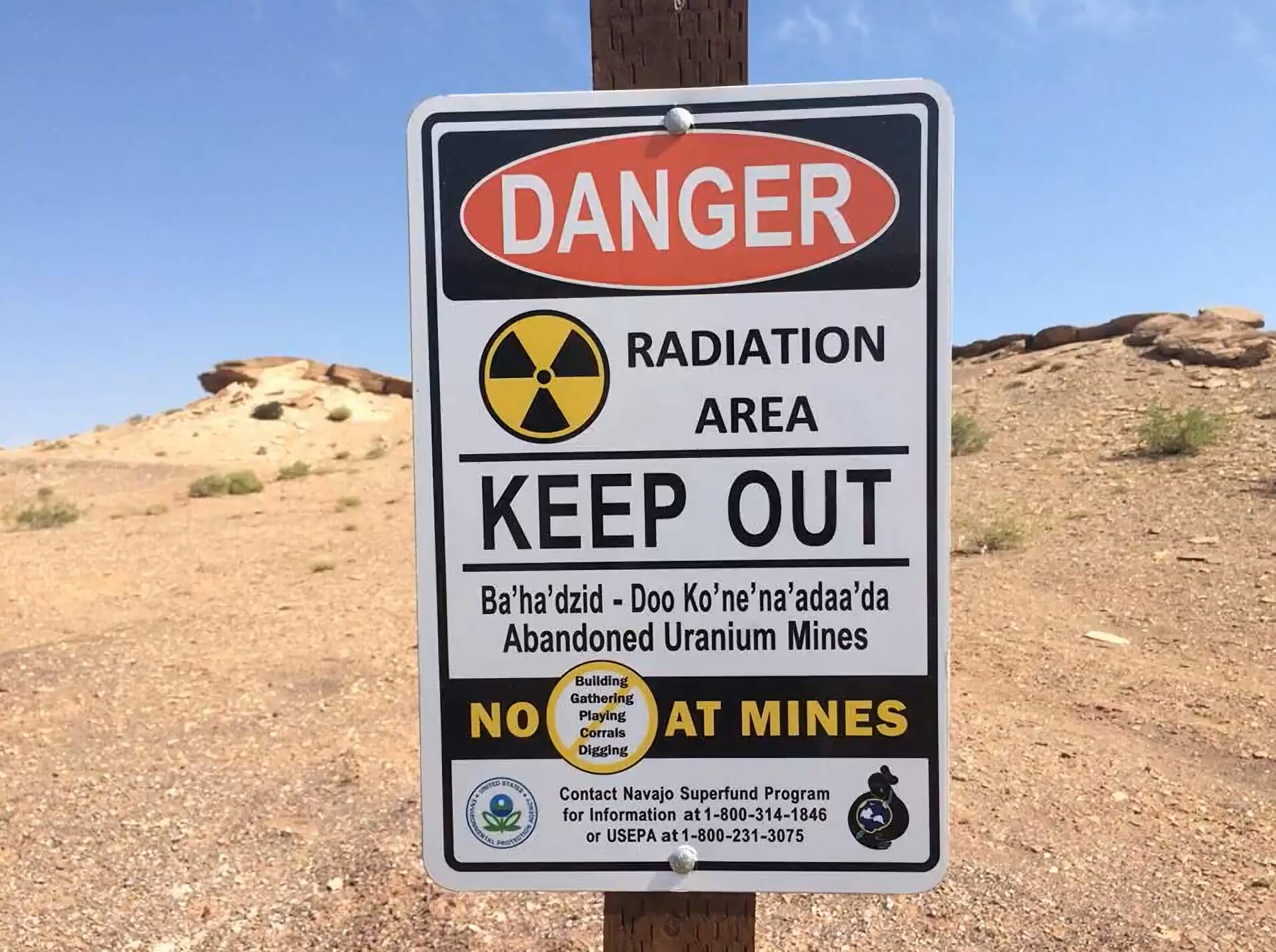
Radiation warning sign in front of A&B No. 3 Mine
Throughout his speech, Chalmers reiterated that the ore being transporting is not as dangerous as some of the other materials traveling through the city like sulfuric acid that could dissolve your hands or the “immediate hazards” that could be present with chlorine gas or fuels. “Whereas uranium ore you would just literally shovel it up, scan it, you’d make sure you cleaned it up, but it is not an immediate hazard,” said Chalmers. “I think that’s one stigma with uranium mining that they don’t fully understand.”
In an area plagued by the various remnants and continuations of nuclear colonialism, from the Church Rock uranium mill spill, to the documented health effects of uranium mining on the Navajo Nation, to the desecration of sacred sites without permission of the affected indigenous nations, the crowd was unresponsive to Chalmers claims.
Councilman Jim McCarthy responded to Chalmers’ assertions. A former member of the Grand Canyon Historical Society, McCarthy once attended a meeting at the rim of the Grand Canyon, overlooking the Orphan Mine uranium mine. “I asked the man who was giving the presentation who used to be the manager of that mine and I asked if there were any health effects on the miners,” McCarthy said. “He told me that’s the sad part, almost everyone who worked there got cancer and is dead.” Studies support that anecdote. According to the National Institute for Occupational Safety and Health’s mortality study on uranium miners, which began in the 1950s and has been updated several times through 2000, causes of death among this population that were significantly above average included lung cancer, pneumoconiosis (a type of lung disease caused by dust), tuberculosis, emphysema, and work-related injuries.
Chalmers told the audience that he also had friends who died of lung cancer from uranium mining but said that the industry had learned a lot in the last 50 years to combat that. “So does that mean that no one gets cancer anymore from these mines?” asked Coral Evans, the mayor of Flagstaff.
Chalmers attempted to respond. “Well, I mean, when you look at cancer, this is something that always drives me crazy. They say you get cancer from uranium or smoking or whatever, and then they haul you in and give you radiation to get rid of it,” Chalmers said. “People get cancer from different things, and I don’t think people really know all the reasons that people get cancer like if you’re at high altitude at 7000 feet, you get more radiation at 7000 feet than 1000 feet or 2000 feet.” Chalmers continued to argue that even with all the research surrounding cancer, there are unanswered questions as to what causes it and many contributing factors.
While Chalmers used the idea of unknown factors to support uranium mining, Mayor Evans used it as the very reason to support the hauling ban. “I just feel like I need to say this because this is something I feel is weighing heavily on me,” said Evans. The mayor reminded the audience of the people affected by U.S. nuclear bomb tests outside of Vegas in Nevada throughout the 30s, 40s, and 50s. “My mom was one of the individuals who were downwind of that, and as a result of her being a downwinder she died of breast cancer.”
Before that, Evans said there wasn’t cancer in her family. Evans has now had breast cancer twice, and her daughter, 23, is being tested by doctors annually. “They think something might have happened with this whole downwind thing and now it might be in our genes,” she added. “While we have changed, grown, and do things differently now, future generations pay for what has happened to the generations that came before, so I just want to make sure that we all understand that.”
The mayor’s points made a case for caution, emphasizing the many unknowns surrounding how uranium could affect generations to come and urging this generation to take the proper precautions to avoid destroying the lives of those yet to come. McCarthy, who has a masters degree in environmental engineering, said that he has a background in exploring issues like this and understands that even though we have learned a lot, risk analysis in these industries can be complicated.
According to a press release by Haul No!, “Right before the resolution went to vote, Flagstaff Mayor Coral Evans shared, ‘I want to talk about the constitutionality and legality part of it. In his ‘Letter from Birmingham Jail,’ Dr. King writes about something he calls just and unjust laws. I would say that in this country, historically we have seen several laws over the course of time be changed or overturned because we, the people, have determined that they were unjust.’
“Mayor Evans challenged all council members to pass the resolution with a 7-0 vote. ‘The legacy of uranium mining in Northern Arizona is unjust. I believe that it has been clearly shown through the routes that this ore takes… [and] clearly shown through the level of cancer and cancer-related death experienced by the indigenous people in our region. We have Indigenous neighbors that have been fighting and asking for relief on this issue for decades, for generations. And they are asking us, as the largest city in Northern Arizona, to help them.’”







